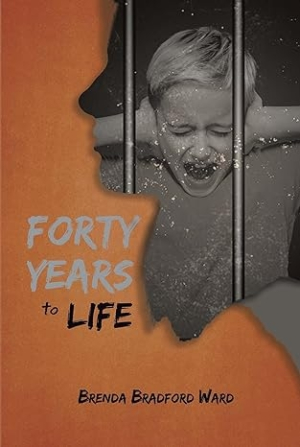Forty Years to Life
Analytical and entrenched in personal experiences, Forty Years to Life is a singular exploration of the experiences of late-transitioning trans people.
Brenda Bradford Ward’s memoir–cum–social science survey Forty Years to Life covers the experiences of transgender individuals who feel compelled to suppress their gender identities.
Ward, who self-describes as a former “suppressing MtF woman [who] would be described accurately as being physically male and exhibiting masculine gender, even though her gender identity is feminine and female,” transitioned in late adulthood. Herein, she writes about the personal and shared thought processes of those who, like her, led extended pretransition existences, practicing gender identity suppression beyond adolescence and into adulthood and thus experiencing the tormenting erasure of a crucial part of their selfhood pretransition.
Ward contextualizes her own gender identity suppression within the postwar environment of the US. Her considerations are ranging; they include the effects of television, schooling, extracurricular activities, and parenting on creating the binaries of male and female behavior and sex presentation. These cultural elements are charged with exacerbating the divide between Ward’s public and private lives. The book also emphasizes the shame and debilitating obsessiveness of feeling compelled to fraudulently adopt a male persona in accordance with the physical sex assigned to her at birth. And in considering this cultural environment that necessitated the decades-long practice of gender suppression (or of possessing a private selfhood at odds with a performed gender), the book reveals the sweeping political, religious, cultural, and interpersonal implications that accompany such considerations of selfhood.
Despite the book’s personal elements, it avoids the subjectivity that is characteristic of individual memories. Rather, even when it’s describing personal experiences, such as Ward’s relationship with her siblings and parents, it maintains critical and analytical distance from its subjects. In the manner of an extended critical essay, the narration is most often matter-of-fact, with a bevy of pronouncements and a dearth of abstract description. It incorporates statistics, upfront definitions, legislative history, and sociological and cultural trends into its work. It also acknowledges its limitations, such as its inability to account for the gender identity suppression experiences of those with quite different experiences, as with those who transitioned in early childhood and were able to live out gender identities that matched their socialization from a young age. It is illuminating in an academic sense because of its unsentimental and precise prose, though its explications of individual and group psychology within its specified context run long.
Forty Years to Life is a sizable hybrid memoir concerning the psychological and cultural impacts of gender identity suppression.
Reviewed by
Isabella Zhou
Disclosure: This article is not an endorsement, but a review. The publisher of this book provided free copies of the book and paid a small fee to have their book reviewed by a professional reviewer. Foreword Reviews and Clarion Reviews make no guarantee that the publisher will receive a positive review. Foreword Magazine, Inc. is disclosing this in accordance with the Federal Trade Commission’s 16 CFR, Part 255.

